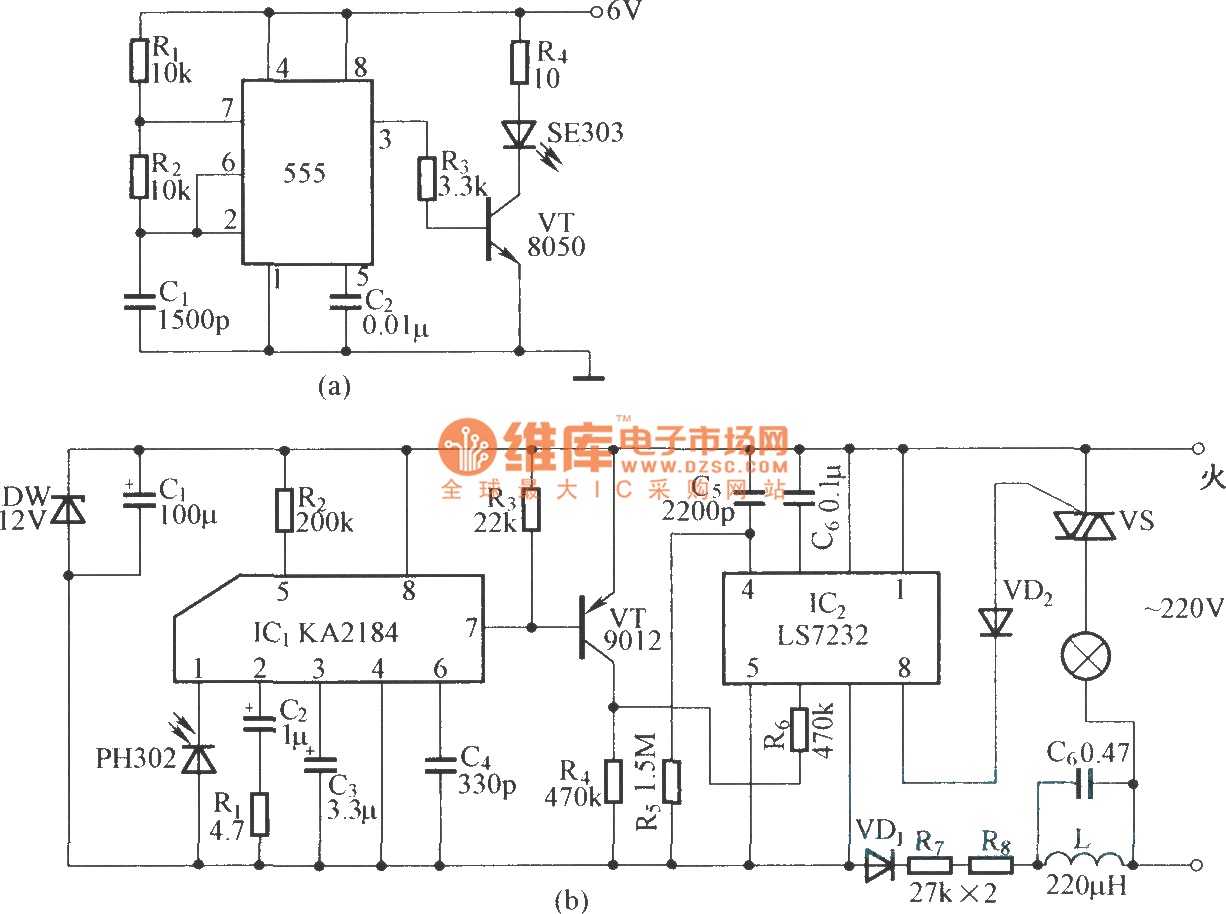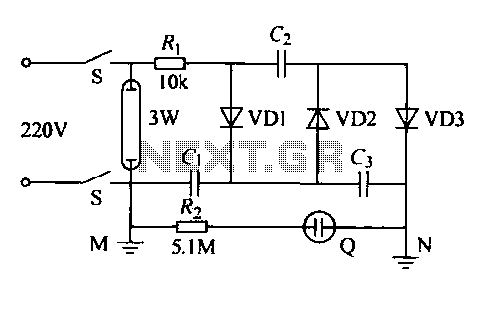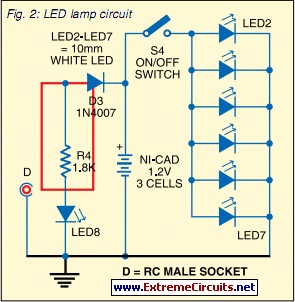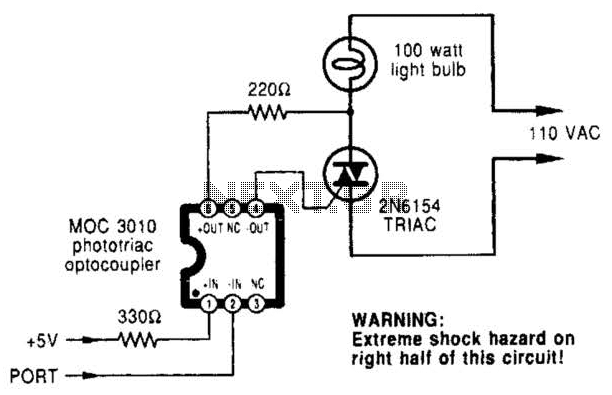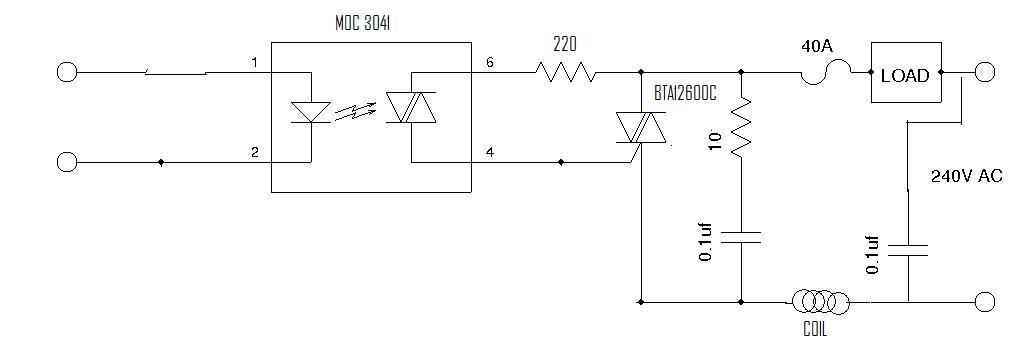
TRIAC LAMP DIMMER
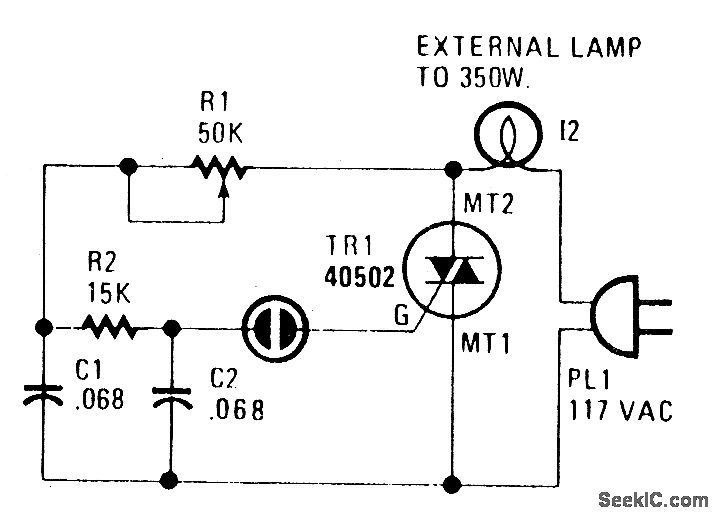
A heatsink allows the TRIAC (TR1) to manage power levels up to 350 watts. The neon lamp (I1) will not activate the gate until it is in conduction, and resistor R1 is used to adjust the lighting level as desired.
The circuit utilizes a TRIAC (TR1) for controlling high power loads, with a maximum power handling capability of 350 watts when adequately cooled with a heatsink. The heatsink is essential for dissipating heat generated during operation, ensuring the TRIAC remains within safe temperature limits to prevent thermal failure.
The neon lamp (I1) serves as an indicator and a triggering mechanism for the TRIAC. It remains non-conductive until a specific voltage threshold is reached. Once this threshold is surpassed, the neon lamp will conduct, providing a triggering voltage to the gate of the TRIAC. This mechanism allows for precise control over the TRIAC's operation, ensuring it only activates when the desired conditions are met.
Resistor R1 plays a critical role in setting the desired lighting level. By adjusting the resistance value, one can control the amount of current flowing through the circuit, thereby influencing the brightness of the connected load. This feature provides flexibility in lighting applications, allowing users to customize the intensity according to their needs.
The overall design is suitable for various applications, including lighting control systems, where dimming capabilities are essential. Proper attention must be given to the selection of the heatsink, TRIAC, and resistor values to ensure optimal performance and reliability of the circuit.Using a heatsink, the TRIAC (TR1) can handle up to 350 watts. The neon lamp, I1, won`t trip the gate until after it conducts and using R1, set the lighting wherever you want it. 🔗 External reference
The circuit utilizes a TRIAC (TR1) for controlling high power loads, with a maximum power handling capability of 350 watts when adequately cooled with a heatsink. The heatsink is essential for dissipating heat generated during operation, ensuring the TRIAC remains within safe temperature limits to prevent thermal failure.
The neon lamp (I1) serves as an indicator and a triggering mechanism for the TRIAC. It remains non-conductive until a specific voltage threshold is reached. Once this threshold is surpassed, the neon lamp will conduct, providing a triggering voltage to the gate of the TRIAC. This mechanism allows for precise control over the TRIAC's operation, ensuring it only activates when the desired conditions are met.
Resistor R1 plays a critical role in setting the desired lighting level. By adjusting the resistance value, one can control the amount of current flowing through the circuit, thereby influencing the brightness of the connected load. This feature provides flexibility in lighting applications, allowing users to customize the intensity according to their needs.
The overall design is suitable for various applications, including lighting control systems, where dimming capabilities are essential. Proper attention must be given to the selection of the heatsink, TRIAC, and resistor values to ensure optimal performance and reliability of the circuit.Using a heatsink, the TRIAC (TR1) can handle up to 350 watts. The neon lamp, I1, won`t trip the gate until after it conducts and using R1, set the lighting wherever you want it. 🔗 External reference
